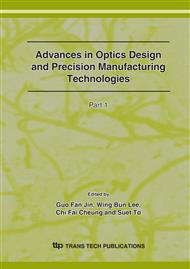p.1077
p.1083
p.1089
p.1095
p.1100
p.1105
p.1111
p.1117
p.1123
Photoacoustic Imaging Application in Tumor Diagnosis and Treatment Monitoring
Abstract:
Photoacoustic imaging (also called optoacoustic or thermoacoustic imaging) can image vascularity clearly with simultaneous high contrast and high spatial resolution, and has the potential to be an application for tumor diagnosis and treatment monitoring. In a unique photoacoustic system, a single pulse laser beam was used as the light source for both cancer treatment and for concurrently generating ultrasound signals for photoacoustic imaging. The photoacoustic system was used to detect early tumor on the rat back, and the vascular structure around the tumor could be imaged clearly with optimal contrast. This system was also used to monitoring damage of the vascular structures before, during and after photodynamic therapy of tumor. This work demonstrates that photoacoustic imaging can potentially be used to guide photodynamic therapy and other phototherapies using vascular changes during treatment. Prospective application of photoacoustic imaging is to characterize and monitor the accumulation of gold nanoshells in vivo to guide nanoshell-based thermal tumor therapy.
Info:
Periodical:
Pages:
1100-1104
Citation:
Online since:
December 2007
Authors:
Price:
Сopyright:
© 2008 Trans Tech Publications Ltd. All Rights Reserved
Share:
Citation:


